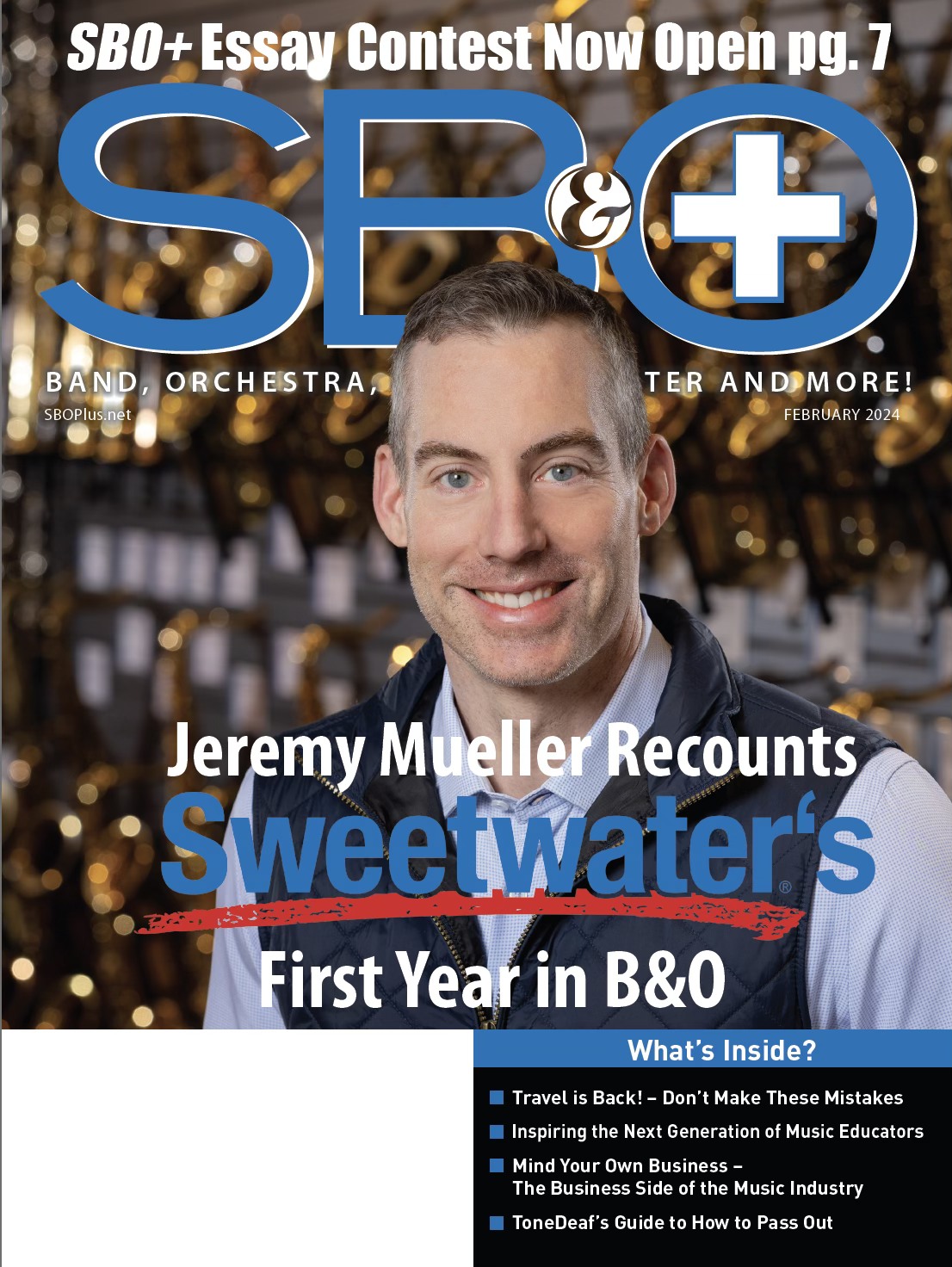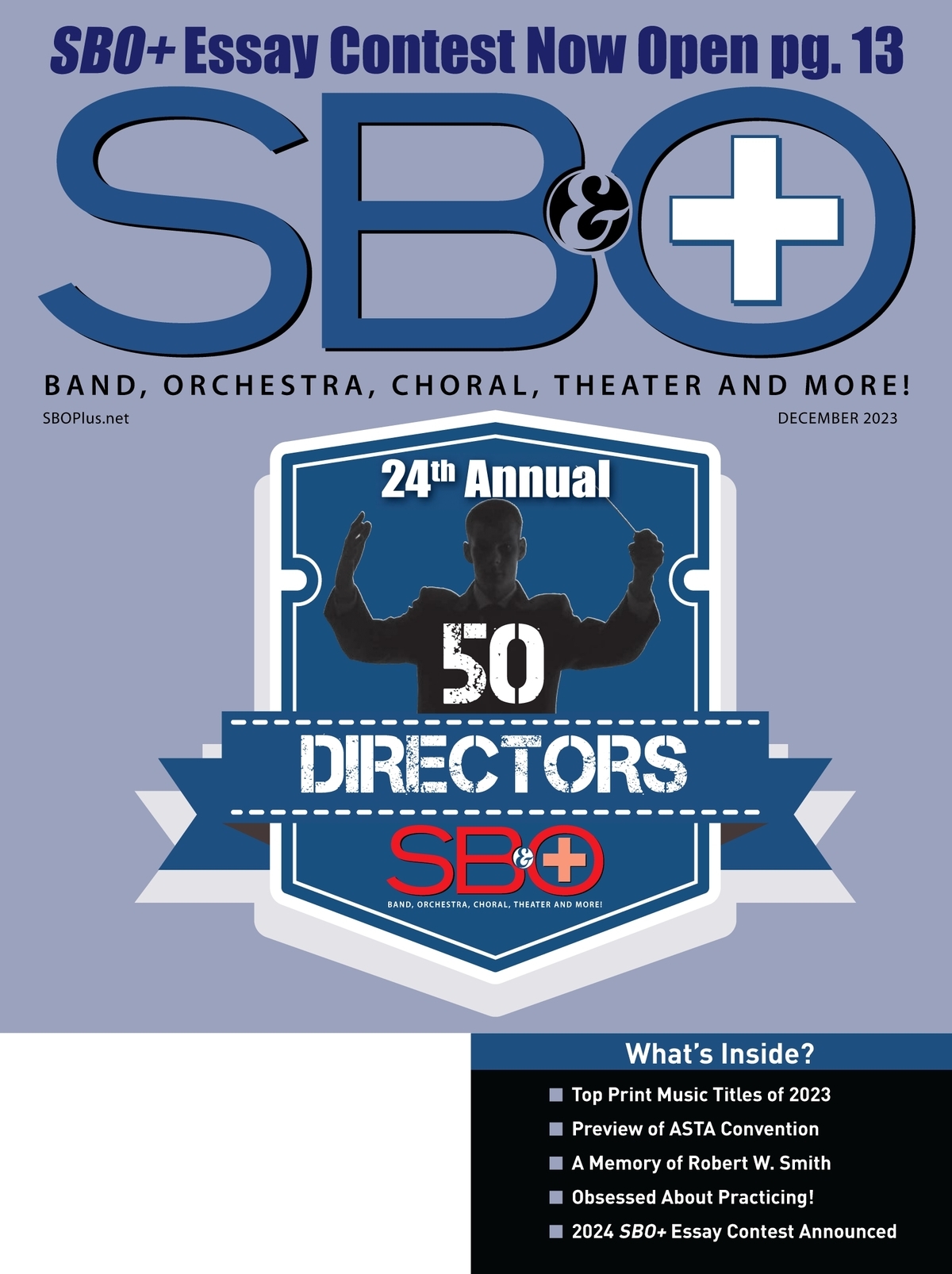EDUCATORS SUBSCRIBE FOR AS LOW AS $0.00! CLICK HERE!
 Few software programs have had the staying power of Finale. When it was released it immediately became the standard by which all other notation programs were measured.
Few software programs have had the staying power of Finale. When it was released it immediately became the standard by which all other notation programs were measured.
It’s a testament to the program’s vision that since that time, while many notation programs have come and gone, only one other program has successfully carved out a significant slice of this demanding market.
Back in Time
Let’s start with a little history. This is the 25th major version of the program that was first released in 1988. Originally, it was designed for the early Mac, with its 9” screen, limited CPU power, RAM, and hard drives. The designers came up with many workarounds, some of which were ingenious. This included a tool and menu-based interface that made extensive use of dialog boxes. There were also a lot of numbers involved that could be difficult to decipher. Early Macs had excruciatingly slow screen redraws, which meant moving items directly on the screen wasn’t practical. Instead, values were entered into dialog boxes. I tell you all this because, unlike Sibelius, which undertook a major reworking of its interface a few versions back, Finale has stayed true to its original design and the look and feel of it remains very similar. Of course, Finale 25 takes advantage of the power of today’s computers, but someone who learned the program in 1990 and had not touched it since, could open it today and probably get to work without a great deal of difficulty.
Working it Out
The philosophy behind Finale is a little different than that of other programs. From the beginning, it was quite amazing what could be done with the program. But, Finale has never really tried to do too much for you, you must do it yourself. This gives you a great deal of control and freedom, but it’s not always easy. There are very few things I’ve ever tried to do in Finale that I didn’t eventually figure out, but here were times when it was a little frustrating. Perhaps in response to its reputation for being difficult, Finale includes by far the best online documentation of any notation program. The manual is browser-based and the search engine is robust and intuitive. Finale was also the first to include video tutorials in their documentation. QuickStart Videos cover most of the basic functions of the program. The videos are short and to the point, but I do wish they would ditch the distracting background music.
The only way to work efficiently in Finale is to customize it. Fortunately, you can create templates that include everything you use, not just instruments, but also layouts, and custom libraries of chord symbols, articulations, dynamics, text expressions and more. You can create FinaleScripts that automate procedures you use repeatedly and many macros can be reprogrammed. Many users also use external macro programs and keyboards. Doing all this takes some time and effort, but. For composers, engravers and other people who need precision and speed, it’s not only worth it, it’s essential.
But what about the more casual user? This is where Finale has made the most significant changes over the years. Simple projects like lead sheets, worksheets, and basic scores are considerably easier. They’ve improved the workflow considerably by consolidating many of the most commonly used tools and functions. So, while most of the tools remain, the average user will only need a handful of them. The result is a program with a more logical organization that is much easier to use. And yes, you can easily move things directly on the screen, more so than other programs in fact, though you’ll still find you need to enter numbers at times.
For teachers, there are some very good reasons to consider Finale. The worksheet template library is extensive and the flexibility of layout makes it easy to create your own custom lesson materials. Scaled down versions of Finale, including the free NotePad program can make things easier and considerably more affordable.
So, with all that out of the way, let’s see how the most recent version, Finale 25 stacks up.
Staying Up to Date
Finale 25 (current version is 25.2.) is available either via download or on a USB drive; optical media is no longer available. The operating system must be 64-bit, Mac OS Yosemite (10.10) and Windows 7 or better. Pricing is $600 retail, $350 academic. Upgrades and crossgrades are $149. A free, fully functional, 30-day trial is available for download, too.
The most important difference between version 2014.5 and 25 is under the hood. Finale 25 is now 64-bit. It runs smoother and faster and it’s a welcome improvement. For example, in the past working with larger scores using Garritan instruments resulted in much slower operation, often to the point where you had no choice but to use the SmartMusic SoftSynth. That’s no longer true. Working with large orchestral scores with GPO instruments presented no problem. Finale has been focusing on improved playback for some time and the increased speed is very noticeable here. The purchase of Garritan and the integration of GPO into Finale was a big step forward. The basic library includes orchestral, band and jazz instruments and now. In Finale 25, the library has been expanded to over 400 instruments including the Concert D Grand Piano, many world instruments and other instruments from the Instant Orchestra program. Beyond the included GPO library, Finale also supports third-party VST and Audio Unit instruments and sample libraries.
Also, added in this version is support for Rewire, Propellerhead’s inter-application audio protocol. The audio output from Finale can be sent directly to a channel in most popular DAWs. With this new capability, the movie window has been removed and film scoring projects will need to be done in your DAW. Most of you will find this works easily and better than trying to do it in Finale itself.
Related to this is the ability to set different fonts for time signatures in score and parts. Large time signatures are commonly used in film scores, but not in parts. Finale now let’s these be set independently. I do have to wonder if they couldn’t have done a better job implementing it, though. According to the manual, it takes 12 steps and the use of a plug-in to do this. The manual says it’s easily done, but that wasn’t my experience.
One new feature that teachers should really appreciate is the ability to export transparent PNG graphics. Previously, this required editing the image in a photo editing program. For those of us making presentations and other teaching materials, this is a real-time saver.
There are a few other changes of note. MusicXML has a been updated to version 3.0 and now supports compressed and uncompressed files. MusicXML is still rather inconsistently implemented across the different notation programs, so any attempt at standardizing is welcome. Engravers will be pleased to see contoured Dashed Slurs have replaced dashed curved lines. They will also be relieved entering notes in transposed instruments will play the transposed note, not concert pitch. This is a long-requested fix that has finally been implemented.
One feature that has been removed will cause mixed feelings. In a previous version, the ability to import a PDF and have it translated into a Finale file resulted in a small uproar from copyright owners. This function has been removed. But along with it, scanning has also been removed and SmartScore Lite is no longer included with the program. The free version was always limited and there are still programs available that will convert scans to musicXML which Finale can open.
The Report Card
All in all, Finale remains what it has always been, an excellent professional engraving program. For sheer power and precision control of everything, it can’t be beaten. That control does come at a price and the learning curve for high-end users is still steep. The move to 64-bit and the increased speed makes this an essential upgrade for most users.
I give this version a solid B. Beyond the engine, most of the changes are incremental, but they are still welcome. They lose points as there are still some parts of the interface that are long overdue for an upgrade and for the tendency to make things more complicated than they need be. MakeMusic’s solution has been to take it slow and modify the interface one or two steps at a time. It’s understandable as the user base has a lot of years invested in the program. At the same time, by not making a clean break, they may be creating more users who will resist change.






